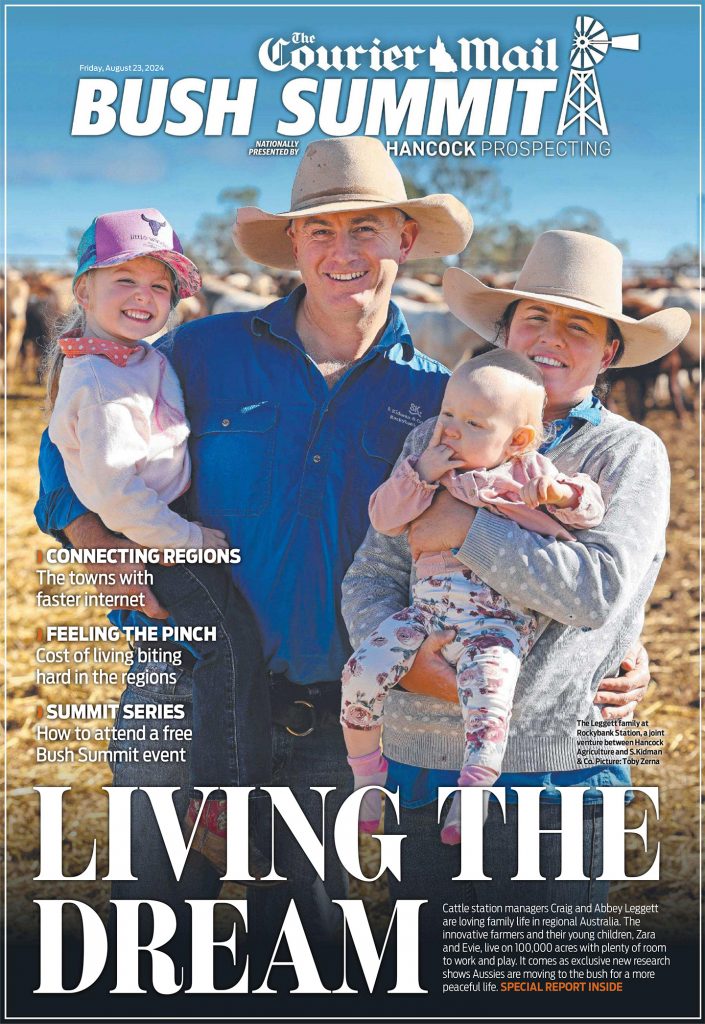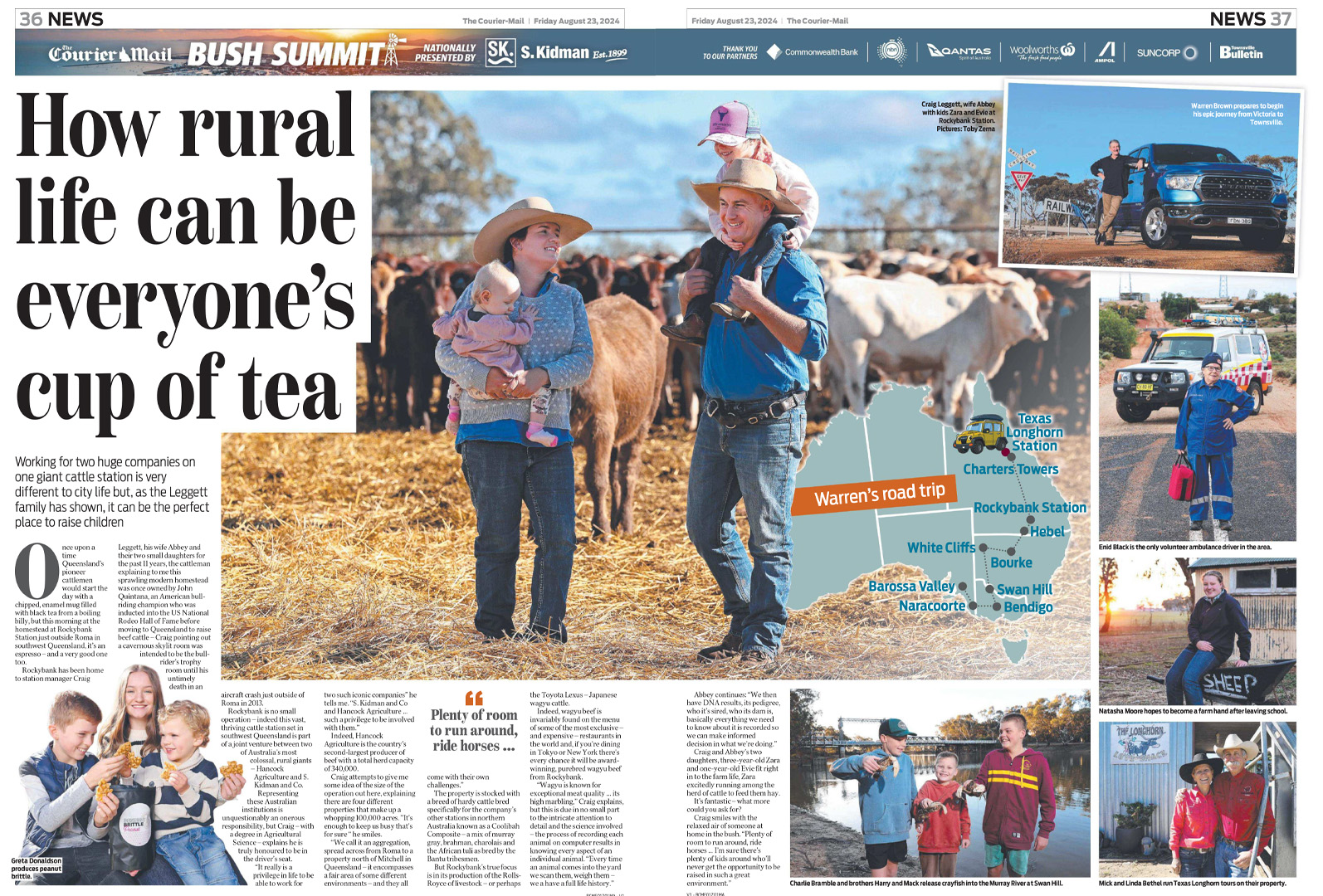
Working for two huge companies on one giant cattle station is very different to city life but, as the Leggett family has shown, it can be the perfect place to raise children.
Once upon a time Queensland’s pioneer cattlemen would start the day with a chipped, enamel mug filled with black tea from a boiling billy, but this morning at the homestead at Rockybank Station just outside Roma in southwest Queensland, it’s an espresso – and a very good one too.
Rockybank has been home to station manager Craig Leggett, his wife Abbey and their two small daughters for the past 11 years, the cattleman explaining to me this sprawling modern homestead was once owned by John Quintana, an American bullriding champion who was inducted into the US National Rodeo Hall of Fame before moving to Queensland to raise beef cattle – Craig pointing out a cavernous skylit room was intended to be the bullrider’s trophy room until his untimely death in an aircraft crash just outside of Roma in 2013.
Rockybank is no small operation – indeed this vast, thriving cattle station set in southwest Queensland is part of a joint venture between two of Australia’s most colossal, rural giants – Hancock Agriculture and S. Kidman and Co. Representing these Australian institutions is unquestionably an onerous responsibility, but Craig – with a degree in Agricultural Science – explains he is truly honoured to be in the driver’s seat.
“It really is a privilege in life to be able to work for two such iconic companies” he tells me. “S. Kidman and Co and Hancock Agriculture … such a privilege to be involved with them.”
Indeed, Hancock Agriculture is the country’s second-largest producer of beef with a total herd capacity of 340,000.
Craig attempts to give me some idea of the size of the operation out here, explaining there are four different properties that make up a whopping 100,000 acres. ”It’s enough to keep us busy that’s for sure “ he smiles.
“We call it an aggregation, spread across from Roma to a property north of Mitchell in Queensland – it encompasses a fair area of some different environments – and they all come with their own challenges.”
The property is stocked with a breed of hardy cattle bred specifically for the company’s other stations in northern Australia known as a Coolibah Composite – a mix of murray gray, brahman, charolais and the African tuli as bred by the Bantu tribesmen.
But Rockybank’s true focus is in its production of the Rolls- Royce of livestock – or perhaps the Toyota Lexus – Japanese wagyu cattle.
Indeed, wagyu beef is invariably found on the menu of some of the most exclusive – and expensive – restaurants in the world and, if you’re dining in Tokyo or New York there’s every chance it will be award winning, purebred wagyu beef from Rockybank.
“Wagyu is known for exceptional meat quality … its high marbling,” Craig explains, but this is due in no small part to the intricate attention to detail and the science involved – the process of recording each animal on computer results in knowing every aspect of an individual animal. “Every time an animal comes into the yard we scan them, weigh them – we a have a full life history.”
Abbey continues: “We then have DNA results, its pedigree, who it’s sired, who its dam is, basically everything we need to know about it is recorded so we can make informed decision in what we’re doing.”
Craig and Abbey’s two daughters, three-year-old Zara and one-year-old Evie fit right in to the farm life, Zara excitedly running among the herd of cattle to feed them hay.
It’s fantastic – what more could you ask for?
Craig smiles with the relaxed air of someone at home in the bush. “Plenty of room to run around, ride horses … I’m sure there’s plenty of kids around who’ll never get the opportunity to be raised in such a great environment.”


